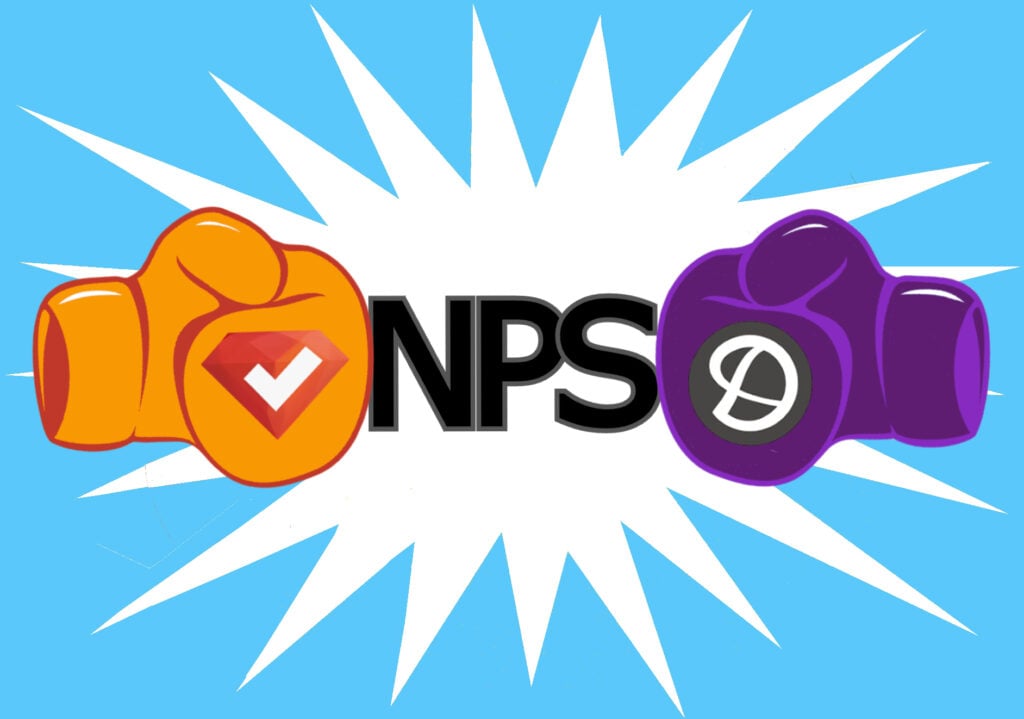Whether their motto is “Semper Fi” or “Semper Paratus,” military servicemembers have a language all their own. When it comes time to survey them, this is just one of the many things that needs to be taken into consideration. But despite the need to be careful with words and other elements when conducting military surveys, they can be extremely beneficial for gathering feedback, assessing needs, and improving various aspects of operations, personnel management, and policy development.
Create your FREE Military Survey or Questionnaire Now!
What Is A Military Survey?
Organizations use military surveys to gather information and insights from service members. Topics include questions about military life, mobilization and readiness. Many of these surveys are designed to measure things like morale, mental health, job satisfaction, leadership effectiveness, career readiness, etc. Completed surveys then provide a better understanding of how soldiers feel about their roles , responsibilities and access to support.
Regardless of military branding, the value of service member surveys does not cease. Military assessments help develop policy, improve training programs, and address challenges such as personnel retention, equipment issues, and command status. They are essential in evaluating leadership efforts and ensuring that the organization meets the needs of service members
Which Branches Conduct Military Surveys?
All branches of the military conduct surveys, however some may do this more frequently or extensively based on their specific missions, culture, and size, which we cover below.
1. Department of Defense Survey
The Department of Defense (DoD) conducts some of the largest and most comprehensive surveys. They often include participation from all branches of the military. For example, the Status of Forces Survey (SOFS) is administered across active-duty and reserve components in all branches. DoD surveys typically cover topics such as morale, readiness, family support, and mental health.
2. Army Survey
The Army is the largest branch of the military. Fittingly, leadership conducts a high level of surveys. These usually focus on soldier readiness, family life, health, and leadership, which is important given the branch’s high deployment rates and operational speed. The Army Climate Assessment Survey and Global Assessment Tool (GAT) is a good example of this.
3. Navy Survey
The Navy conducts several surveys, such as deployment surveys and surveys about ship life. Navy surveys, like the Command Climate Assessment and Navy Retention Survey, assess sailors’ experiences with leadership, operational tempo, and career satisfaction. They may also delve into Navy-specific areas, like the challenges of life at sea, shipboard conditions, etc.
4. Air Force Survey
The Air Force is known for using technology and data in its operations, so you can expect their surveys to be conducted online (no paper surveys for these airmen and women). One Air Force survey that is regularly administered is the Air Force Climate Survey which looks to better understand personal experiences with leadership, job satisfaction, and the technological environment in which they work.
5. Marine Corps Survey
The Marine Corps is a smaller, exclusive force, so their surveys tend to be more targeted. Often, marine corps surveys will simply focus on leadership, unit morale, combat readiness, and physical and mental resilience. The Marine Corps Command Climate Survey is a common tool for assessing these items leadership and unit morale.
6. Coast Guard Survey
As part of the Department of Homeland Security, the Coast Guard conducts surveys tailored to its unique mission, which includes law enforcement, search and rescue, and environmental protection. Surveys such as the Coast Guard Workforce Climate Survey focus on operational effectiveness, leadership, and personnel readiness.
12 Reasons To Create Military Surveys
1. Assessing Morale and Well-being
Military surveys help leaders gauge the overall mood and morale of personnel. This is valuable since low morale can impact operational effectiveness and readiness. The surveys can also be used to assess mental health issues like stress, PTSD, or anxiety; they can also look at the impact of military life on relationships. These results can determine the need for mental health support programs. Surveys such as the Health-Related Behaviors Survey (HRBS) often tackle these questions.
2. Improving Training and Readiness
Feedback from military personnel on the effectiveness and quality of their training can help leaders refine training programs. In doing so, they can better prepare forces for real-world scenarios, making sure they are prepared and equipped for deployments or combat operations.
3. Evaluating Leadership and Command Climate
Effective leadership is imperative in the military. Surveys can provide feedback on the performance of military leaders at different levels, identifying strengths and areas where they may need improvement. Assessing the organizational culture within a unit also helps determine if the environment is supportive, fair, and conducive to success. Surveys could bring up certain issues to work on, such as poor decision-making or lack of inclusivity.
4. Measuring Job Satisfaction and Retention
Why might someone stay or leave the military? Some surveys try to answer this with questions about job satisfaction, career progression, and personal fulfillment. This can reveal factors influencing retention. This feedback can inform changes to personnel policies.
5. Identifying and Addressing Issues
Military surveys help identify challenges such as issues with housing, pay, benefits, or deployments. Insights gained can shape new policies or improve existing ones. Surveys also offer an anonymous way for personnel to report incidents of harassment, discrimination, or misconduct, which might otherwise go unreported. The Defense Organizational Climate Survey (DEOCS) addresses these types of questions.
6. Enhancing Equipment and Technology
Surveys allow military personnel to provide feedback on the performance and reliability of equipment, vehicles, and weapons systems they use. This helps improve existing technology and guides future acquisitions. In addition, understanding how troops interact with technology in the field can inspire innovation and adaptations to improve safety, performance, and effectiveness.
7. Building Trust and Transparency
Showing that leadership is interested in the opinions and well-being of military personnel can build trust amongst the ranks. Surveys can also be used to hold leadership accountable and ensure they are addressing issues that matter to the people they lead.
8. Compliance and Reporting
Surveys may be required by government regulations or military policies such as those related to equal opportunity or sexual harassment prevention.
9. Service Academy Surveys
Military academies like West Point, the Naval Academy, and the Air Force Academy regularly survey cadets and midshipmen to gather feedback on their training, leadership development, and experiences. This helps shape policies around education, training, and leadership development at military academies.
10. Post-Deployment Health Reassessment (PDHRA)
This survey is given to service members after deployments to assess their physical and mental health, particularly focusing on PTSD, traumatic brain injury (TBI), and other post-combat health issues. Results guide follow-up care and support services for returning personnel.
11. Veteran Surveys
Surveys like the Veterans Health Administration Survey assess the needs and satisfaction of veterans with the healthcare and services provided by the Department of Veterans Affairs (VA). The results guide the development of programs and services for veterans, focusing on improving access to healthcare, benefits, and other resources.
12. General Officer and Flag Officer Surveys
Along with servicemembers, senior leaders are also often surveyed to provide insights on strategic priorities, leadership challenges, and organizational effectiveness within the military. The feedback from senior leaders is used to align strategic goals and ensure that the military’s leadership is in sync with evolving missions and objectives.
Create your FREE Military Survey or Questionnaire Now!
Military Survey Tips
Getting military personnel to participate in a survey requires thoughtful planning, trust-building, and effective communication. Here are some strategies to encourage participation:
Clarify the purpose
Clearly explain why you’re conducting the survey and how the results are going to benefit the respondents or the military community.
Leverage command channels
Use official communication methods, such as unit briefings, emails, or intranet postings, to publicize the survey. When messages come through formal channels, troops take them more seriously.
Assure anonymity and confidentiality
Military members may be hesitant to provide honest feedback due to fear of retaliation. Assure them on a survey welcome page that their responses are anonymous and confidential.
Get endorsement from leadership
A survey endorsed by a senior leader or respected figure within the chain of command lends credibility and can increase participation.
Make it easy to access
Whether it’s online, via mobile devices, or available in paper format, it should be convenient for servicemembers to take.
Consider length and timing
Keep the survey short (or consider microsurveys) to avoid survey fatigue. Also, consider timing—don’t launch surveys during deployments, exercises, or holidays.
Highlight the benefits
Show how the survey results will make a difference. Personnel are more likely to engage if they believe their feedback will lead to improvements in areas like training, leadership, or quality of life.
Provide incentives
Providing incentives (e.g., rewards, recognition, or raffles) for participation can encourage involvement. There are both pros and cons to this approach, so be sure to check out our survey incentives blog.
Provide flexible deadlines
Offer a reasonable window for completion to accommodate different operational tempos and time constraints.
Use simple and concise language
Military personnel may be diverse in terms of education, background, and language skills, so keep questions straightforward.
Avoid jargon
While military-specific terms may be necessary, avoid overly complex jargon that could confuse respondents or make questions harder to understand.
Understand the military culture
Recognize the hierarchical structure, discipline, and unique challenges military personnel face. Frame questions about leadership, for example, in a way that respects the chain of command.
Consider diversity
Account for gender, rank, branch, and cultural diversity within the military (you may want to check out our DEI survey blog). Ensure that the questions are inclusive and appropriate for all participants.
Use a variety of question types
Keep military participants engaged with different types of survey questions (image-based, multiple choice, drop-down, sliders, etc.)
Use skip logic
Ensure irrelevant questions are skipped based on previous responses (e.g., if a respondent answers that they have not deployed, skip questions about deployment experiences). Learn more about skip logic.
Conclusion
Surveying military servicemembers is essential for understanding the unique challenges, experiences, and needs of those who serve. These surveys provide valuable insights into issues such as morale, mental health, job satisfaction, and readiness, helping leaders identify areas that need improvement. By giving servicemembers a voice, surveys foster a culture of transparency and trust, ultimately contributing to the effectiveness of military operations.
Ready to create your military servicemember survey? Start today for free with SurveyLegend! Our surveys are easy to create, and user-friendly for busy members of the military. SurveyLegend employs a wide variety of question types, uses skip logic, and employs encryption for high levels of security.
Are you an active member or veteran of the military? (If so, thank you!) Have you participated in surveys about your service? Let us know what you think about military surveys in the comments!
Create your FREE Military Survey or Questionnaire Now!
Frequently Asked Questions
Yes, the military regularly conducts surveys to gather feedback, assess needs, and improve various aspects of operations, personnel management, and policy development. These surveys are important for understanding the attitudes, morale, readiness, and experiences of service members, veterans, and civilian personnel.
While all branches conduct surveys regularly, the Army and Navy tend to conduct them most often due to their larger size, high deployment rates, and diverse operational environments. The DoD also plays a central role in conducting surveys that span across all branches to address broader issues like morale, mental health, and leadership.
Many appreciate having a platform to share their opinions, especially when they feel their feedback can lead to meaningful changes in leadership, operations, or quality of life. Surveys can also offer a safe, anonymous way to report issues like harassment or poor morale. However, some service members experience survey fatigue, particularly if surveys are long or frequent, and may grow skeptical if they don’t see real improvements as a result of their input.





